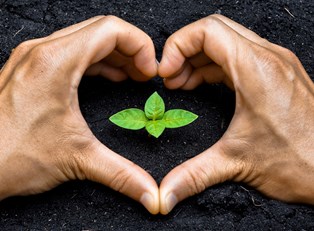Organic versus non-organic, heirloom seeds, cage-free… with all the terms being thrown around nowadays, it’s easy to get confused about what the overall goal is. Overall, the goal is sustainable living through sustainable agriculture. In this article, we will talk about what sustainable agriculture really is, what you can do to help, and why this is important to our planet.
So, what is it?
Sustainable agriculture, simply defined, is growing food and products in a way that doesn't harm the planet. By using ecological practices that work in harmony with humans and the planet, agriculture doesn't have to be harmful. The farming techniques used actually protect animals, crops, people, and the earth.
Why does it matter to me?
The purpose of sustainable agriculture is found in its name. It is agriculture that helps sustain the planet for future generations by protecting our resources. It allows us to satisfy our needs as humans for animal products, plant products, and fiber products without harming the environment or the planet and its inhabitants. This ensures that our farms will be viable for the next season and each season after that, so we know we will be able to continue growing and producing for generations to come.
If we farmed without thinking of what it does to the environment, we wouldn’t have any resources left to farm with. For example, if we pollute our farms with pesticides, the soil becomes tainted. This compromises the quality of our soil and the growth and success of the next crop. The water that was used to irrigate the soil is also tainted with pesticide chemicals and the run-off will travel, carrying the chemicals with it. This is not sustainable agriculture because it is harmful to our environment, our animals, our natural resources, and our planet in general. These practices harm our environment and make it impossible to continue growing healthy food.
What can I do to help?
First, do your research. Only buy products that have been produced using sustainable practices. Buy locally to cut down on your product’s carbon footprint. When a product is transported across the country, even more natural resources were used to get it there. Buying locally is the easiest way to keep these practices from happening. Shopping at stores that support local farmers and sustainable living is another easy way to help. It’s also helpful to grow your own produce at home to keep from buying crops that were grown using harmful practices.



